Spotlight on John Taggart
Jul 14, 2015
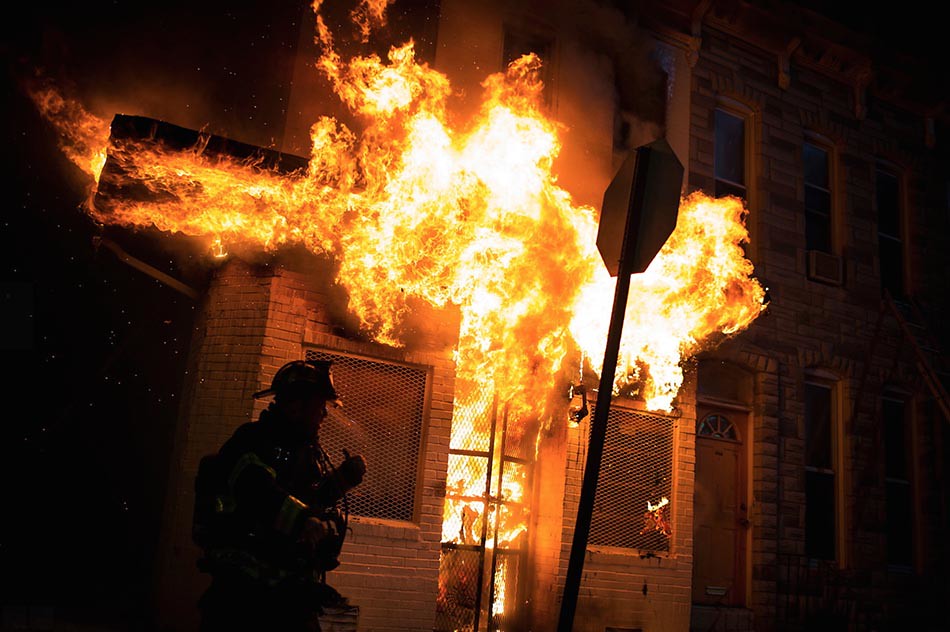
TID:
Thanks for taking the time for an interview, John. This is an image with a lot of intensity, can you tell us a little of the backstory?
JOHN:
Hey, thanks for having me - This was the first night of the protests in Baltimore, following the death of Freddie Gray while in police custody. I had driven down from New York that day with a few fellow photographers. People were setting fire to cars and businesses. What you see here is a corner store—it was already on fire when I got there, just about the same time as the fire department arrived. We had originally gone to New Shiloh Baptist church, where they had held Mr. Gray’s funeral earlier in the day. The protests had started outside. It had become a central meeting point both for protesters and the media. We left the church to drive around to see what we could find, and heard sirens from a fire truck--we started to follow it, and it led us to the corner store a just a few blocks from the church.
TID:
This was from a national news event, can you talk more about what it was like for you to navigate and work?
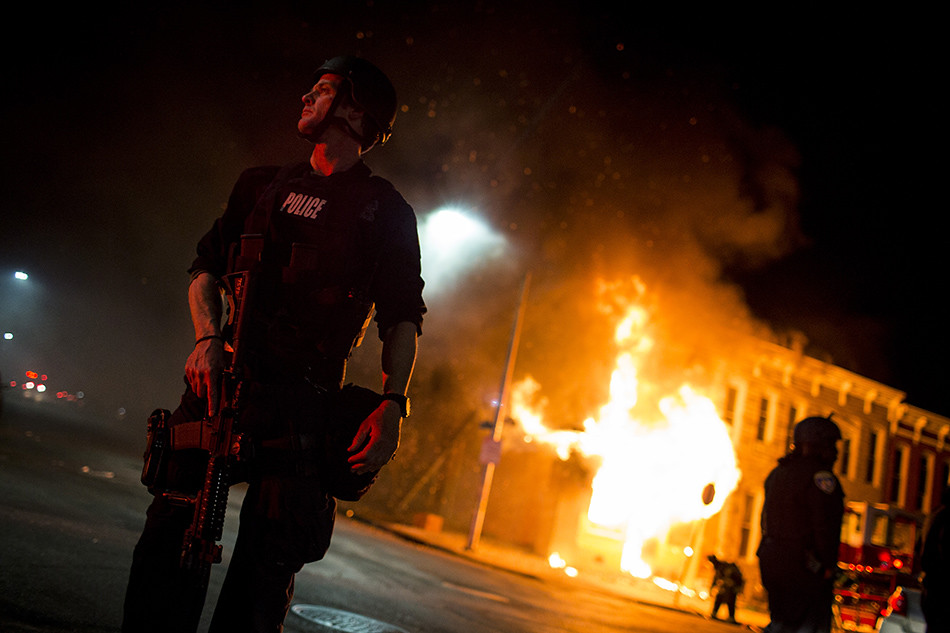
JOHN:
During the drive down our colleagues on scene reported to us that people had smashed their car windows, assaulted them and some even had their equipment stolen--people were targeting cars that belonged to media. So that night we couldn’t just pull out our laptops and file pictures to our respective desks, which is what you often do at a news event. Instead we filed our pictures back at the hotel that night. That first night we stuck together out on the streets—we would drive around, and stop and get out when we saw things happening. Most of us had on bullet proof vests, kevlar helmets and gas masks—I bought my own to wear in situations like this.
Things had settled down by the next day, but it was still a little hostile—but after a few days we eventually found a community center where a local photographer volunteered, and we were finally able to relax and file pictures. The citywide curfew started the next day, which added another layer of complexity. It meant we worked all day where everything was closed because of protests and fires. And by the time we were done there was nowhere to really decompress or eat dinner.
This work is important for several reasons. First, these photos are part of the most important topic in American society right now, I think. Meaning racism and all forms of inequality in the United States in general. I also like this series of photos because they don't show your typical protest photos—somebody throwing a molotov cocktail or people yelling at the police or that kind of thing. It’s a raging fire, which you could argue also illustrates the anger and frustration people feel, with police holding large rifles protecting the firemen while they work. But it is actually also special to me because I’ve covered breaking news and the first responders who are usually there too—firemen and policemen—for so long, first in Philadelphia and then New York City.
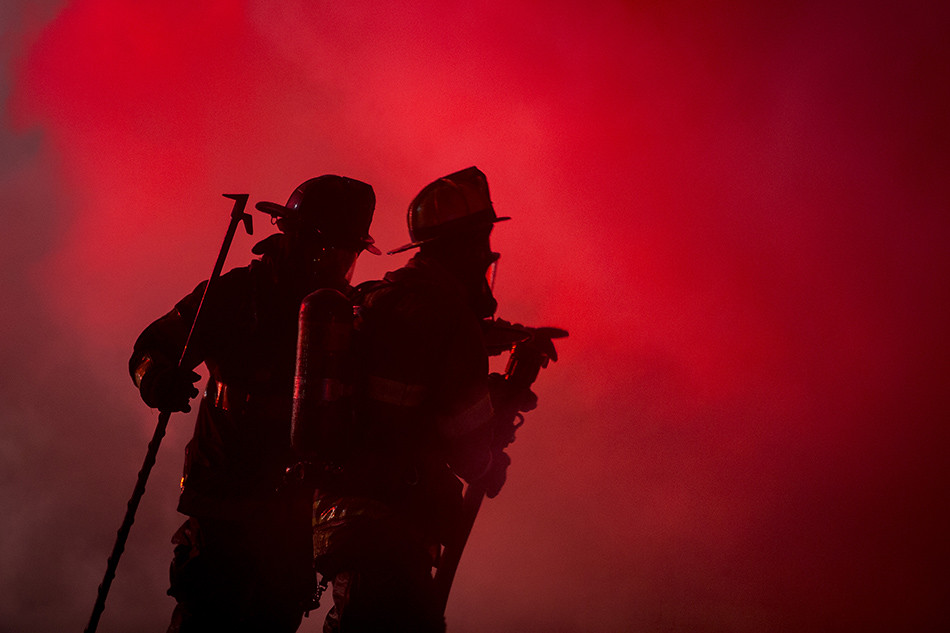
I was actually really comfortable right at that moment because to me it was an environment that I felt at home in. I have covered so many big fires in New York City, and I count some of those scenes as some of my favorite pictures, both because of the images and because I was good at getting there to capture things early on. I know a lot about where to be to take a good picture at a fire and how to not get in the way of the firemen. They have a job to do, and that’s to save lives and put out the fires, and I know how to work around them and get good photos but be safe. The last thing they need is to rescue a photographer that falls from a rooftop, trips over their equipment and stabs themselves with a piece of broken glass.
TID:
What sort of planning did you do in preparation for these images?
JOHN:
Having a bag packed with everything you need and ready to go would be ideal. In most cases, though, you have to run home and quickly throw what you need for a few days into a duffel bag, and just hope you haven’t forgotten anything. After that, I would either book a ticket using the fastest form of public transportation or hitch a ride with another photographer who is also heading down to cover the news. And while all this is happening, I'm sending out emails to just about every photo editor on my phone letting them know I am heading down to cover it.
I find it best to pack as many socks as possible, because most cases you are on your feet all day, with very little time to sit down. So, having a fresh change of socks can really make a difference in how you feel and work. Also pack the most comfortable pair of shoes you have, in most cases covering these types of stories you have no time to go shopping for things you forget, so it is best to be prepared and be comfortable. I also carry snacks, vitamins and an ultra portable first aid kid in my camera bag at all times.
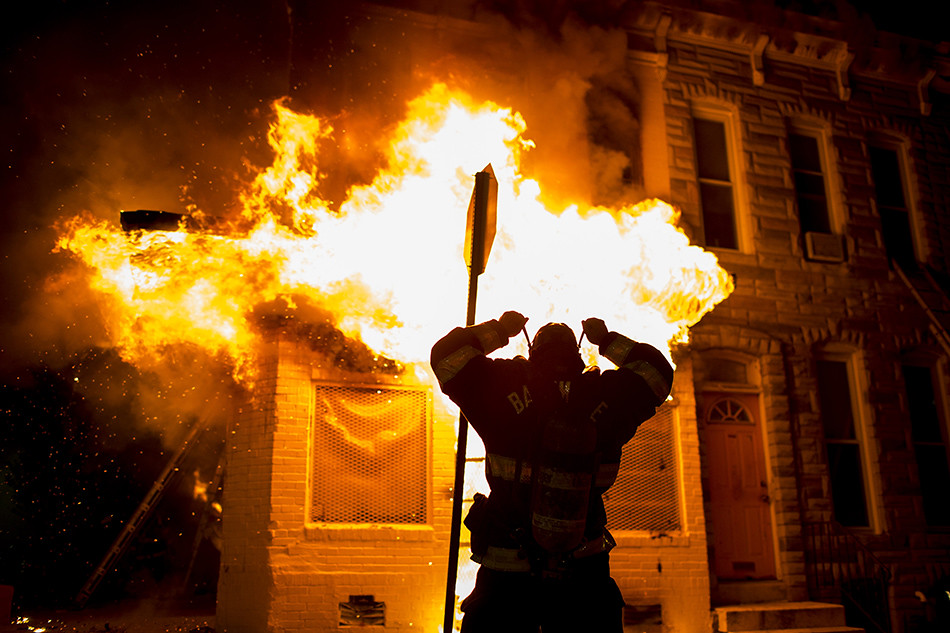
TID:
I'm always curious about photographers ability to problem solve. What issues have you run into while working on this body of work, and how have you overcome them?
JOHN:
Charging batteries and having extra batteries is the number one priority. Without that you can’t work. When covering news like this you are working long hours—6 am to 10 pm at night or longer—and in most cases shooting a ton of images. So, making sure you have enough battery and memory is most important--it’s not a good time to be borrowing batteries or memory cards from your friends. I try to be as prepared as much as possible, but sometimes that isn't always the case. A few months ago I bought this portable laptop charger for my 11-inch Macbook Air, and the second day in Baltimore, I carried it in my bag all day. It is one of those things that you will never really use on a regular basis, except for when you really need it. Only problem was, I forgot to charge it.
No matter how many times you triple check or double check, you will always forget something. When adrenaline is pumping and everything is happening at once, it’s tough to have all of this stuff prepared, which is why its good to slow down and relax, take deep breaths before heading out. I also throw an extra card reader in my bag and tightly pack it away, because you never know when those things are going to fail. Keeping extra USB cables and a new card reader on hand not only helped me, but helped many colleagues; who in return will help you when you need it. I guess the main issue I run into in these events, is that most photographers aren't prepared, or always need to charge their phones. It's easy to Google ways to preserve battery life on just about any device you use, and when at breaking news events like this, it’s also rude to ask other photographers who are also hurting for power to use theirs.
I suggest putting down the phone and focusing on the pictures and story, which is why you are there in the first place. There are many options now for ultra-light portable power chargers for your phones and devices, and they save you the headache of being "that guy," when everyone else is doing everything they can to hold on to their own charge. The majority of my first few days in Baltimore, I would step back and focus on the story, and the reason why I was there, get off of social media, so when shooting I would be more relaxed. And I would only file when I knew I had something good.
TID:
Now, onto the moment. Please walk us through how you photographed the moment and what was going on in your mind.
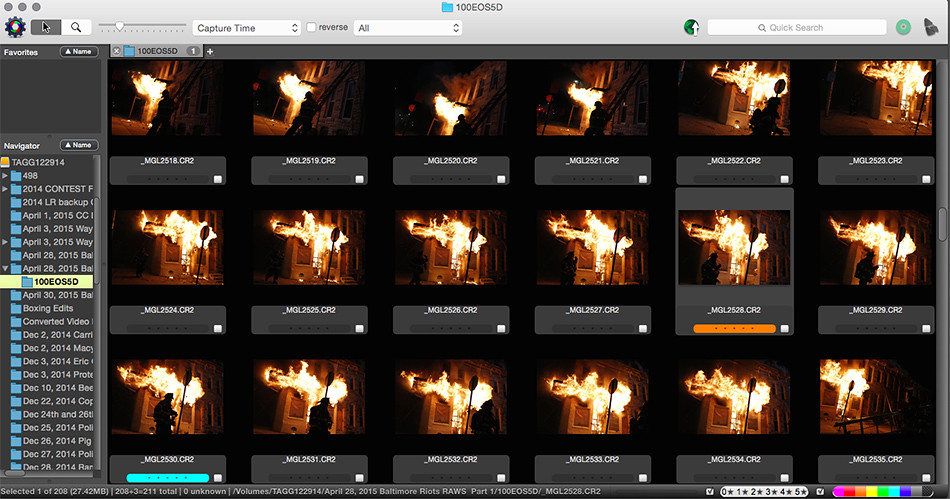
JOHN:
Normally when you cover fires this intense you try to shoot as much as you can before the access gets cut off or things get too dangerous. I made a point to wait there--I wanted to get a firefighter in the frame. I even got down on my knees and focused upwards, in hopes that a firefighter would come in and out of the frame. I knew I wasn't in the way of anyone—yet--and there was still a small window to capture some of that raw intensity, It wasn't much time, but it was just enough to a few usable images that were up close and personal with this fire.
TID:
How has covering this issue impacted you as a person/what have you learned?
JOHN:
I feel that people now more than ever HATE the media, especially police and protestors. I hear story after story where freelancers felt very unsafe--including seasoned war photographers--and this only creates more stress for everyone. It is our job to be there, and yes this is what we signed up for, but we are freelance photographers. We have no hired security teams, creating a circle and protecting us, with their own guns like the majority of mainstream media outlets like CNN or FOX. I guess I learned, or observed, is that our industry is now more than ever concerned with safety.
I was hit with 3 gas canisters at random, because I just happened to be in the wrong place at the wrong time, and if I didn't have a vest and helmet I would have probably had a few broken ribs and a large gash in my head. We can all get lucky, but not always. I have been doing this for a pretty long time, and I'm not always so lucky, but I learned from other colleagues, who have been in a lot of tough situations like Iraq and Ferguson. I listened carefully to what they had to say and prevented a lot of problems that could have come my way. A lot of it is mostly common sense, too.
TID:
Additionally, what has surprised you the most while you were in Baltimore?

JOHN:
The crab cakes aren't as good as they say, ha ha, just kidding! I guess what surprised me, was that really everything was shut down by what was happening, and the curfew - everything was affected. We had to drive an hour outside of the city one night to get cheesesteaks in some college town, because we were dying for a hot meal. We mostly had to eat hotel snacks, which is not really food. I guess the curfew in a city that big, it put an impact on a ton of local businesses having to close so early. Restaurants had to close at 8:30 or 9 pm because their employees had to be home by 10 pm. And some places would just stay closed for the whole day. You could feel what was happening everywhere, all over the city.
TID:
In conclusion, what advice do you have for photographers wanting to do this type of work?
JOHN:
Safety should always be first, so being around friends or people you trust and know is key. Try not to drift alone. Stay hydrated and be positive, nobody wants to hear your complaints. Please be prepared (I can't stress this enough). You must carry your own charging supplies, I’ve had so many photographers ask me if they can use my phone charger, and it gets old really fast. Invest in a good gas mask, vest and kevlar, this stuff is expensive but can save your life and help you work with less stress. And buy a pack of comfortable socks.
Here is a small list of things I use and recommend:
Bulletproof vests, kevlar helmets al made in Brooklyn, good gear is expensive but worth it: http://www.cryeprecision.com.
A good and affordable gas mask: http://amzn.to/1f8RyKi
Travel belt with hidden zippered security pocket safely conceals currency: http://amzn.to/1OdFzYf
Anker mini 3350mAh Lipstick-Sized Portable Charger for mobile phones: http://amzn.to/1Mauo4j
Ultralight & Watertight .3 First Aid Kit (will easily fit in any bag): http://bhpho.to/1CE2AlS
Portable power strip great for hotels that never have enough power outlets: http://amzn.to/1Gm3BKd

:::BIO:::
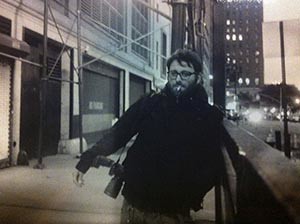
John Taggart is an award-winning photojournalist who started his career in 1998, covering breaking news for newspapers in the Philadelphia region. In 2007 he moved to New York City to work for the New York Daily News, covering local and national news for the paper full-time for five years before leaving to work for clients like the European Pressphoto Agency, The New York Times and The Wall Street Journal. He lives in Brooklyn, and is currently at work on a documentary photo project about a family in Staten Island still struggling to rebuild their home and lives after Superstorm Sandy.
You can see more of his work here:
Mass shooting in Charleston: http://bit.ly/1I3izu2
Freddie Gray protests in Baltimore: http://bit.ly/1HxFGtc
Coney Island: http://on.wsj.com/1LiRh3W
Shooting Spree on Narratively: http://bit.ly/1SnfoPr
2015 Pride March featured on The Photo Brigade: http://bit.ly/1e0NoDw
Follow him on Instagram: @jtaggfoto